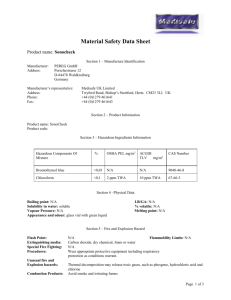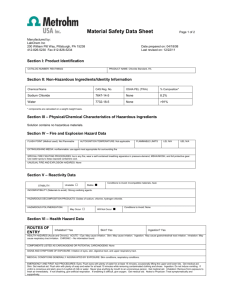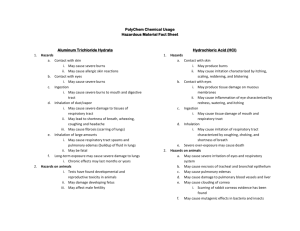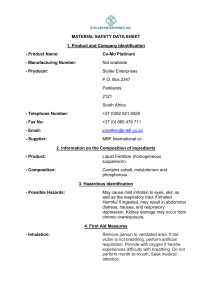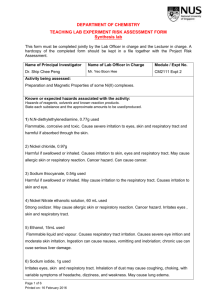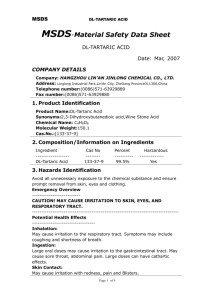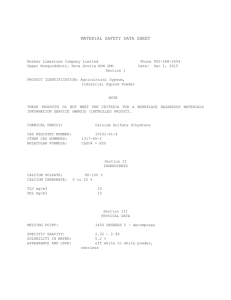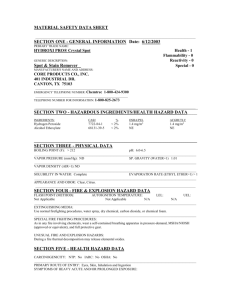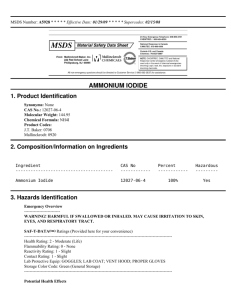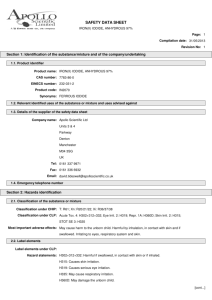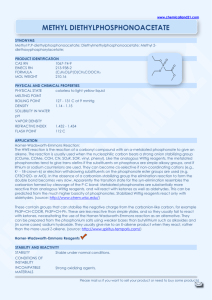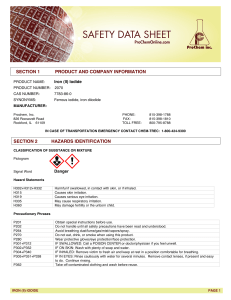DEPARTMENT OF CHEMISTRY
advertisement
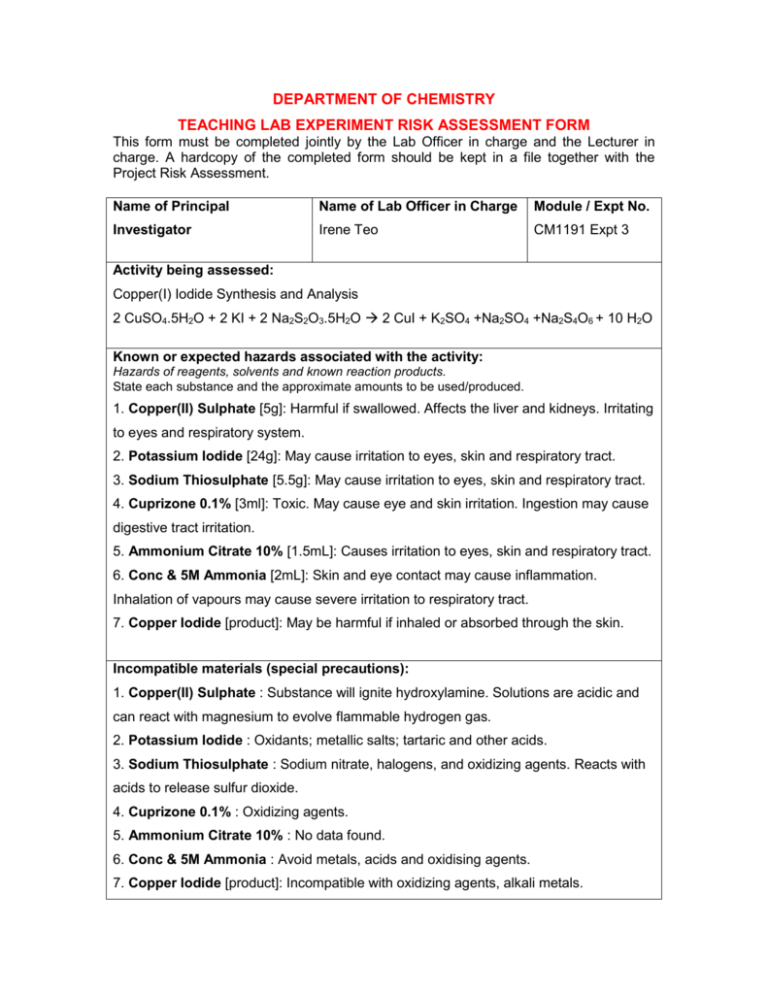
DEPARTMENT OF CHEMISTRY TEACHING LAB EXPERIMENT RISK ASSESSMENT FORM This form must be completed jointly by the Lab Officer in charge and the Lecturer in charge. A hardcopy of the completed form should be kept in a file together with the Project Risk Assessment. Name of Principal Name of Lab Officer in Charge Module / Expt No. Investigator Irene Teo CM1191 Expt 3 Activity being assessed: Copper(I) Iodide Synthesis and Analysis 2 CuSO4.5H2O + 2 KI + 2 Na2S2O3.5H2O 2 CuI + K2SO4 +Na2SO4 +Na2S4O6 + 10 H2O Known or expected hazards associated with the activity: Hazards of reagents, solvents and known reaction products. State each substance and the approximate amounts to be used/produced. 1. Copper(II) Sulphate [5g]: Harmful if swallowed. Affects the liver and kidneys. Irritating to eyes and respiratory system. 2. Potassium Iodide [24g]: May cause irritation to eyes, skin and respiratory tract. 3. Sodium Thiosulphate [5.5g]: May cause irritation to eyes, skin and respiratory tract. 4. Cuprizone 0.1% [3ml]: Toxic. May cause eye and skin irritation. Ingestion may cause digestive tract irritation. 5. Ammonium Citrate 10% [1.5mL]: Causes irritation to eyes, skin and respiratory tract. 6. Conc & 5M Ammonia [2mL]: Skin and eye contact may cause inflammation. Inhalation of vapours may cause severe irritation to respiratory tract. 7. Copper Iodide [product]: May be harmful if inhaled or absorbed through the skin. Incompatible materials (special precautions): 1. Copper(II) Sulphate : Substance will ignite hydroxylamine. Solutions are acidic and can react with magnesium to evolve flammable hydrogen gas. 2. Potassium Iodide : Oxidants; metallic salts; tartaric and other acids. 3. Sodium Thiosulphate : Sodium nitrate, halogens, and oxidizing agents. Reacts with acids to release sulfur dioxide. 4. Cuprizone 0.1% : Oxidizing agents. 5. Ammonium Citrate 10% : No data found. 6. Conc & 5M Ammonia : Avoid metals, acids and oxidising agents. 7. Copper Iodide [product]: Incompatible with oxidizing agents, alkali metals. The risk of injury and its severity likely to arise from these hazards: Spillage and accidental breakage of flasks containing the reagents. Who is at risk? Persons directly in contact with the above stated chemicals. Measure to be taken to reduce the level of risk: Proper laboratory attire and safety measures must always be used in order to reduce the level of risk. No naked flame should be used during the experiment. Training prerequisites: Inform students on the hazards of reagents used. Refer to prepared risk assesments on use of glassware, use of standard electrical equipment and use of diaphgram pump. Use of Glassware Use of Standard Electrical Equipment Level of risk remaining: Low. Emergency action if : Spill: Clean up spills immediately. Absorb spill with absorbing material, then place into a labelled container for disposal. Fire: Use type ABC dry power extinguisher. Is the experiment suitable for out-of-hours operation? Yes References if any: Signature of Lab Officer in Charge::……………………………………………………………….. Date:………………………… Signature of Lecturer in Charge:………… …………………………………….. No Date:… ……………………..
